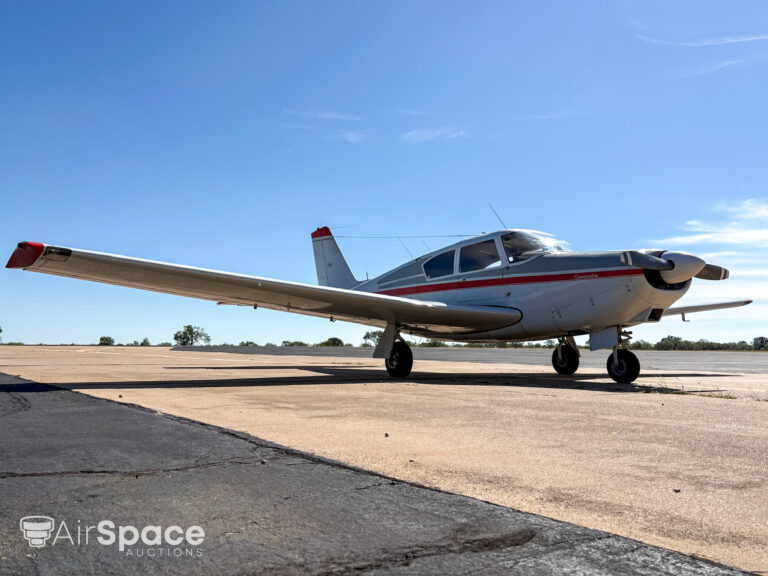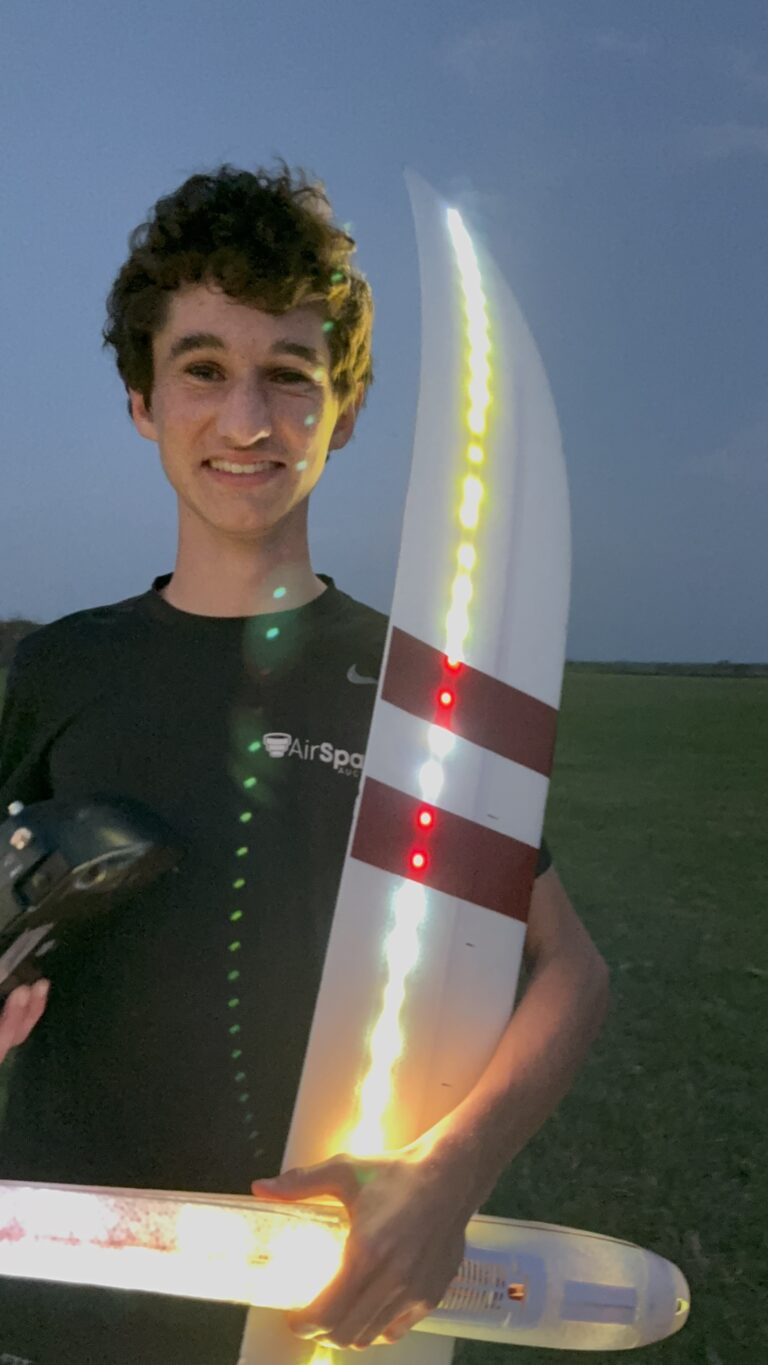The 1946 Beechcraft Staggerwing G17S: A Timeless Classic with a Modern Cockpit
The 1946 Beechcraft Staggerwing G17S is a rare and prized aircraft that holds a unique place in aviation history. Known for its distinctive staggered biplane design and high-performance capabilities, the Staggerwing was an aircraft that pushed the boundaries of speed, luxury, and innovation in the mid-20th century. Serial number B-9, a prime example of the G17S model, offers not only a glimpse into the golden age of aviation but also showcases the modern cockpit that sets it apart from its peers.
This particular aircraft, registration number N99DV, has an illustrious history, having been owned by some of America’s most notable figures, including Lammot du Pont Copeland of the famous DuPont family and E. Duke Vincent, a renowned television producer and naval aviator. N99DV, serial number 9 of only 20 G models ever produced, is a collector’s dream, and its upcoming auction is sure to draw attention from aviation enthusiasts and collectors alike.
In this post, we will explore the history of the Beechcraft Staggerwing, its uses, the legacy of Beechcraft as a brand, and highlight why the G17S model, with its modern cockpit and unparalleled performance, is a timeless example of aviation excellence.
History of the Beechcraft Staggerwing
The Beechcraft Staggerwing, first introduced in 1932, was a revolutionary design in an era when aircraft manufacturers were competing to build faster, more luxurious airplanes. The brainchild of Walter Beech, the Staggerwing was designed to meet the demands of wealthy business executives who needed a fast, reliable, and comfortable mode of transportation. The biplane configuration, with its upper wing set farther back than the lower wing, gave the Staggerwing its name and a unique aerodynamic advantage.
During World War II, the Staggerwing was adapted for military use, serving as a transport, liaison, and ambulance aircraft for the United States and several allied countries. Its robust design and superior performance made it ideal for both civilian and military applications, cementing its place in aviation history.
The G17S model, introduced after World War II, was the final iteration of the Staggerwing and represented the pinnacle of Beechcraft’s biplane design. With only 20 G models produced, the G17S became one of the most sought-after aircraft for collectors and pilots alike.

Uses of the Beechcraft Staggerwing G17S
The Beechcraft Staggerwing G17S was designed with versatility in mind. Its combination of speed, range, and luxury made it ideal for business executives, military officials, and aviation enthusiasts. With a cruise speed of 201 mph and a range of 1,000 miles, the G17S could cover significant distances quickly, making it perfect for cross-country flights. Its spacious four-seat cabin offered a level of comfort rarely seen in aircraft of its era, allowing passengers to travel in style.
The G17S also found use in air racing, where its high-performance Pratt & Whitney R-985AN4 engine and streamlined design made it a formidable competitor. Its ability to operate from short and unimproved airstrips further expanded its utility, making it a favorite among bush pilots and adventurers who needed a rugged yet elegant aircraft.
In modern times, the Staggerwing G17S remains a prized collector’s item. Its rarity, combined with its performance and historical significance, has made it a centerpiece in private collections and museums. Pilots who own and fly the G17S appreciate its blend of classic design and advanced capabilities, a balance of value and performance that Beechcraft has become known for.
Beechcraft: A Legacy of Innovation and Performance
Beechcraft, founded in 1932 by Walter and Olive Ann Beech, quickly established itself as a leader in aviation. The company’s commitment to innovation, quality, and performance led to the creation of some of the most iconic aircraft in history, including the Staggerwing, the Beechcraft Bonanza, and the Beechcraft King Air.
Walter Beech’s vision for Beechcraft was to build aircraft that were not only high-performing but also luxurious and reliable. This philosophy guided the company through its early years and helped it survive the challenges of the Great Depression and World War II. After Walter’s passing in 1950, Olive Ann Beech took over the company, becoming one of the first female executives in the aviation industry. Under her leadership, Beechcraft continued to innovate and grow, producing aircraft that were known for their exceptional quality and value.
The Staggerwing G17S is a testament to Beechcraft’s commitment to excellence. As one of the last biplanes produced by the company, the G17S represents the culmination of years of engineering expertise and a dedication to creating aircraft that deliver a perfect balance of performance, reliability, and luxury.

The Modern Cockpit of the Beechcraft G17S
One of the standout features of this 1946 Beechcraft Staggerwing G17S is its modern cockpit. While the G17S retains the classic lines and design of the original Staggerwing, the avionics have been updated to include modern systems that enhance safety, navigation, and overall flight experience. The integration of modern avionics into a vintage aircraft like the Staggerwing is a perfect example of how classic aircraft can be adapted to meet the needs of today’s pilots.
Avionics Overview:
- Garmin GPSMap 695: This portable GPS unit provides accurate navigation and situational awareness, ensuring that pilots can easily plan and execute flights with confidence.
- GMA 340 Audio Panel: This modern audio panel allows for clear communication and seamless integration of multiple communication sources.
- GTX 327 Transponder: The GTX 327 offers solid performance and reliability for tracking and identification purposes.
- KX-165 and KY-197 Radios: These radios provide reliable VHF communication, a crucial element for any cross-country flight.
- Airspeed Indicator, Turn Coordinator, Vertical Speed Indicator, Altimeter, Attitude Indicator: These essential flight instruments ensure that the pilot is always aware of the aircraft’s performance and position, offering a complete picture of the aircraft’s flight status.
- Manifold Pressure Gauge, Heading Indicator, Oil Temperature Gauge, CHT/EGT Gauge: These engine and flight management instruments allow the pilot to monitor the performance of the Pratt & Whitney R-985AN4 engine and maintain optimal flight conditions.
With these avionics, the cockpit of this G17S blends vintage elegance with modern functionality. The advanced avionics provide the pilot with all the tools necessary for safe and efficient flight, making this Staggerwing not only a historical gem but also a capable modern aircraft.

Detailed Aircraft Overview for Auction
The upcoming auction of this 1946 Beechcraft Staggerwing G17S presents a unique opportunity for aviation enthusiasts and collectors to own a piece of history. Below, we provide a detailed description of the key features of this aircraft.
Airframe:
This 1946 Beechcraft G17S (serial number B-9) has a total airframe time of 2,209 hours, demonstrating a history of careful use and maintenance. With its Grade A cotton fabric covering, the airframe is in excellent condition, maintaining the integrity of its original construction while offering longevity. The aircraft has a fuel capacity of 124 gallons, allowing for a range of 1,000 miles at 65% power, and a cruise speed of 201 mph at 75% power. With a useful load of 1,450 lbs, the G17S is as practical as it is beautiful, offering ample space for passengers and luggage.

Engine:
The aircraft is powered by a Pratt & Whitney R-985AN4 engine, one of the most respected radial engines of its time. This engine, with 636 hours since major overhaul, delivers reliable power and performance. It underwent a complete overhaul in March 1974 at Clydesdale Aircraft Corp, ensuring that it continues to operate smoothly.
Prop:
The Hamilton Standard 2D30-237 propeller, serial number T-38005, was overhauled in March 1975 by Eastern Aircraft Corporation. The propeller’s design and condition make it well-suited to the Staggerwing’s high-performance characteristics, providing excellent thrust and efficiency.

Exterior:
The aircraft’s exterior is striking, with its bright red paint and cream stripes. The paint is in excellent condition, rated 9 out of 10, a testament to the care this aircraft has received over the years. The distinctive look of the G17S, combined with its pristine exterior, makes it a true standout on the tarmac.
Interior:
The interior of the Staggerwing G17S is finished in cream and tan neutral colors, offering a classic, comfortable environment for passengers. Although the interior is rated 7 out of 10, it remains clean and well-maintained, with plenty of potential for customization or restoration to the buyer’s taste.
Additional Features:
This aircraft is serial number 9 of only 20 G17S models ever produced, adding to its rarity and value. Its ownership history, including Lammot du Pont Copeland and E. Duke Vincent, further elevates its status as a collector’s item.

Auction Information
This 1946 Beechcraft Staggerwing G17S will be auctioned from November 20 to November 27, 2024, with a starting bid of $199,999. A 5% buyer premium applies, and a $3,000 deposit is required to participate in the auction. The aircraft is located in Flagstaff, Arizona, and represents a once-in-a-lifetime opportunity to own a meticulously maintained example of one of Beechcraft’s finest aircraft.
With its modern avionics, historic significance, and exceptional condition, this Beechcraft Staggerwing G17S is sure to attract attention from bidders worldwide.
Conclusion
The 1946 Beechcraft Staggerwing G17S is a timeless classic that embodies the best of Beechcraft’s legacy of innovation, performance, and luxury. With its unique staggered biplane design, powerful Pratt & Whitney radial engine, and modern avionics, this aircraft offers the perfect blend of vintage charm and modern capability. For collectors and pilots alike, owning a Staggerwing G17S is not just an investment in an aircraft; it’s an investment in a piece of aviation history. Start your research now with full logbooks available on the website (🔗 above).























